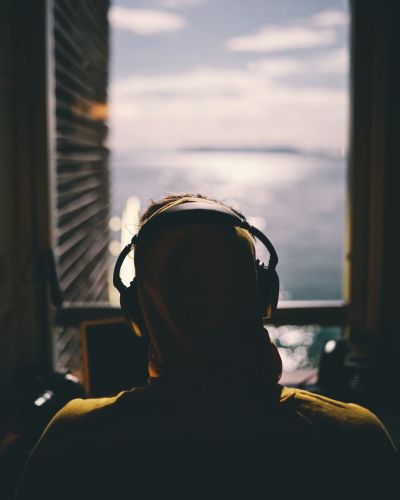sound, mindfulness and wellbeing
Posted on
I love sound and listening, and I need no encouragement to appreciate sound - I just find it endlessly fascinating. I have, however, been thinking about the connection between sound, listening and mindfulness lately. I decided to do some research on it and write a bit about how sound and listening can be closely connected to mindfulness and mental wellbeing.
sound therapy
Sound has an ancient relationship with meditation and healing. Tools and practises such as Australian digeridoos and Tibetan singing bowls have been used for centuries both to heal, in celebrations and ceremonies and to promote wellness- both spiritual and physical. These days, it has become very popular to use ‘sound baths’ for relaxation and meditation. A ‘sound bath’ is where the participants completely immerse themselves in sounds – of gongs, Tibetan singing bowls and bells, for example. There are scientific studies to suggest that these kind of sound therapies do have a measurable effect, and that sound can help to reduce tension, anxiety, even relieve pain.
"Sound has an ancient relationship with meditation and healing."
A review of several hundred scientific articles revealed that there is strong evidence that music has both mental and physical benefits. Rhythm, in particular, can provide pain relief. Other effects are improved cognitive abilities, better memory and feeling less stressed.

Photo by Reynier Carl on Unsplash
be in the moment
Sometimes I just go about life, rushing from one place to the next, thinking about the future or what I am going to have for dinner - I am sure you have been there too. If I stop, look around, listen to the world around me, I usually discover something nice, beautiful, or unexpected. A conscious listening practice, or even just the one-off listening exercise, can help to do just that.
"Stopping to listen, even just for a moment, can re-connect you to the here and now, and in doing so let you take a break, ground yourself and re-connect to the here and now."
In her article “Soundwalking: The joys of combining strolling and listening” April Clare Welsh describes how the practice of soundwalking – a walk with a focus on listening – comes with mental as well as physical benefits.
“Listening walks like this can help us feel more grounded and connected to our environment, as well as providing the obvious benefits to our physical health. With its meditative dimension, the practice of soundwalking shares similarities with mindfulness – both lending their focus to participating in the present moment – and can offer a soothing balm in rough times.”
“Soundwalking: The joys of combining strolling and listening” April Clare Welsh
Stopping to listen, even just for a moment, can re-connect you to the here and now, and in doing so let you take a break, ground yourself and re-connect to the here and now.

Photo by Alberto Frías on Unsplash
self soothing
Self-soothing is a technique that can be used to manage emotions like anxiety or distress, ground ourselves and calm our minds. Often this is done by finding something to distract or to re-focus on the here and now. Babies are usually good at this - sucking their thumbs is a great example. As grown-ups, we might need to think about other methods to self sooth. Sound and listening can be a great way to do this. Forcing yourself to stop, breath and listen to the sounds around you is a great way to stop your mind racing and bring your focus back to the here and now. For many people, listening to music is a great way to self sooth, as is listening to nature sounds, like rain or the ocean waves. Intentionally focusing on listening or regular listening practices can help you to self-sooth, by refocusing your mind, and also by helping you realise which sounds are helpful and calming for you, and which ones are not.
enjoyment!
Last, but absolutely not least, sound and listening can bring so much joy! And that is important for our wellbeing too! I have so many memories of sounds that are enjoyable – the sound of the waves by the sea in summertime. The sound of birds, when I step out in my garden or outside my front door in spring. The kids playing a couple of houses down from where I am now. If I stop and listen, especially for an extended period of time, I find I more often than not discover sounds I really enjoy listening to, or a sound which bring back a nice memory. What could be more important than that, after all?
